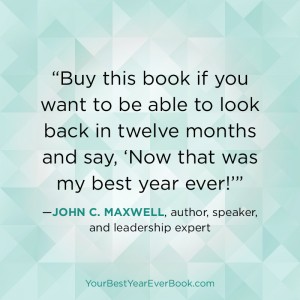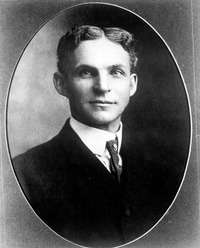. Lost No matter how good your life is, isn’t there one thing you want to achieve that has exceeded your grasp until now? Time to saddle up. With two more weeks to 2017 on the calendar, it’s time to come up with a plan to reach your next highest level.
No matter how good your life is, isn’t there one thing you want to achieve that has exceeded your grasp until now? Time to saddle up. With two more weeks to 2017 on the calendar, it’s time to come up with a plan to reach your next highest level.
Let me recommend Michael Hyatt’s Your Best Year Ever online course and the new Your Best Year Ever book for goal-setting and goal-achieving.
Many of my readers are experts, executives and people who like to excel. Because I know that you like to make the most of life, that is why I call this to your attention to this program.
Last December, I jumped into the Best Year Ever online course through one of the Best Year Ever affiliate partners, Ray Edwards, top-drawer copywriter for people like Tony Robbins, Jeff Walker and Hyatt. Those of us who took the online course with Ray benefitted from his support, wisdom and humor all year with online support groups in real time. It was fun and provided a level of interaction with others that was truly helpful in moving some of the mountains in my life and getting me unstuck when things got tough.
Working through the online Best Year Ever course over five days for an hour each morning between last Christmas and New Year’s Day, I looked at all areas of my life, saw where I was already living large and places where I wasn’t living very well at all. I made some adjustments, I worked hard during 2017 and had a lot of support from Ray’s team. I moved a few mountains…well, at least, got a few scoops of dirt in my shovel…in some important areas.
The 20 pounds I wanted to lose? They went to the Lost and Found. I lost some and most of them found me again.
The book I wanted to write? Check. My first professionally published book combining much of my work is slated to come out early in 2018. More on that as we get closer.
My finances? Meh.
I learned a few things. One is that you can really make massive progress in a few areas of your life and check off a few important boxes. In other areas, you can continue to plan, line things up, course correct and continue.
That’s what I am doing for 2018. Because I took the journey in 2017, I can recommend enthusiastically that if you still have a few mountains to move, this is a great way to do it. You’ll go through a self-assessment and goal-setting process that will reveal some things to you and show you the way forward. And you’ll get year ’round support from people who have done it before. The course has a few options, some with online support and some with a live conference option.
Your Best Year Ever program has been a bright light in 2017 for me. Therefore, it has been an honor to be part of Michael Hyatt’s launch team of 500 believers who are promoting the book version of Your Best Year Ever. No, I don’t get paid to say this. I do, however, get the satisfaction of being part of something valuable and being an evangelist for something worthwhile.
For those of you who don’t know about Michael…
Michael Hyatt is the grand-daddy of online leadership mentors and a role model for entrepreneurs. Among the recent proliferation of online businesses owners and self-published book authors, Hyatt stands out as the one who cut the trail, the one who went first and showed others the way. He built a very successful online business with a lot of self-discipline, planning and focus. He has broken down his methods in a series of online courses, books and live programs.
Hyatt first came to my attention as the CEO of Thomas Nelson publishing, the company I knew as the publishers of John Maxwell’s leadership books. Maxwell is iconic in the leadership industry. If Hyatt led that company, I figured he is the real deal. He is.
To get started making 2018 Your Best Year Ever, click here to take the Best Year Ever online LifeScore survey find out where you stand now in all domains of your life. Then decide which mountains you will move in 2018.
For those who would rather read the book, it will be available January 2, 2018. Here’s a link to pre-order Your Best Year Ever the book.
NOTE: There are several different links that will lead you to the Best Year Ever online course directly through Michael Hyatt, one that will lead you to the online course with support from Ray Edwards International, one that will take you to a page to pre-order the book and one that leads you to a free online LifeScore to get you started.







